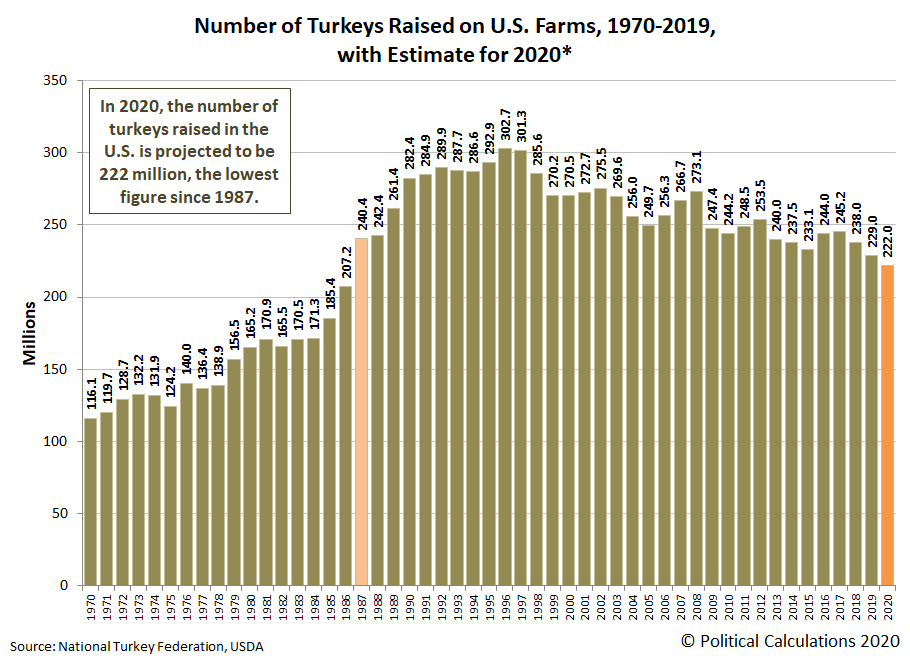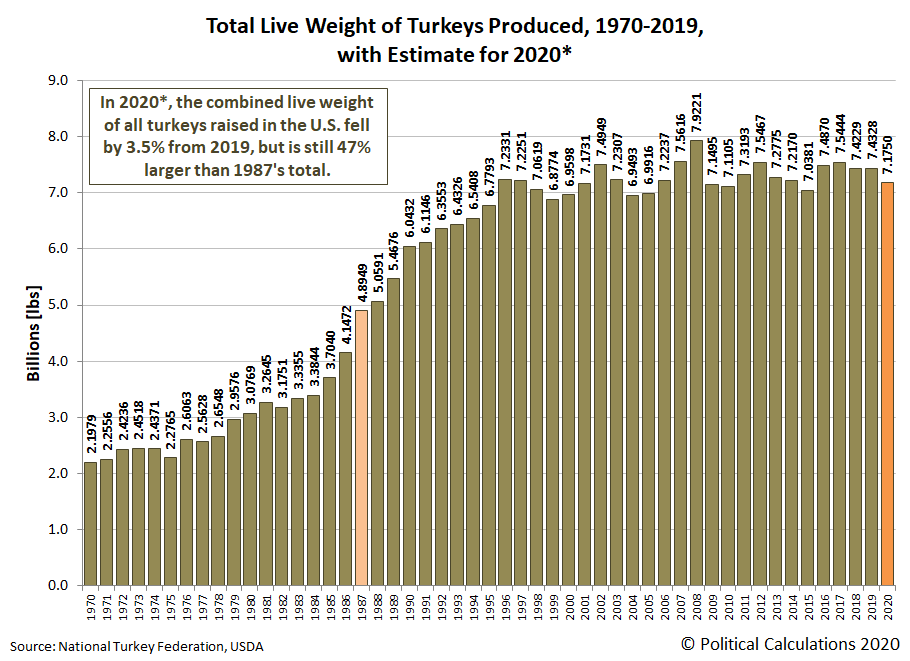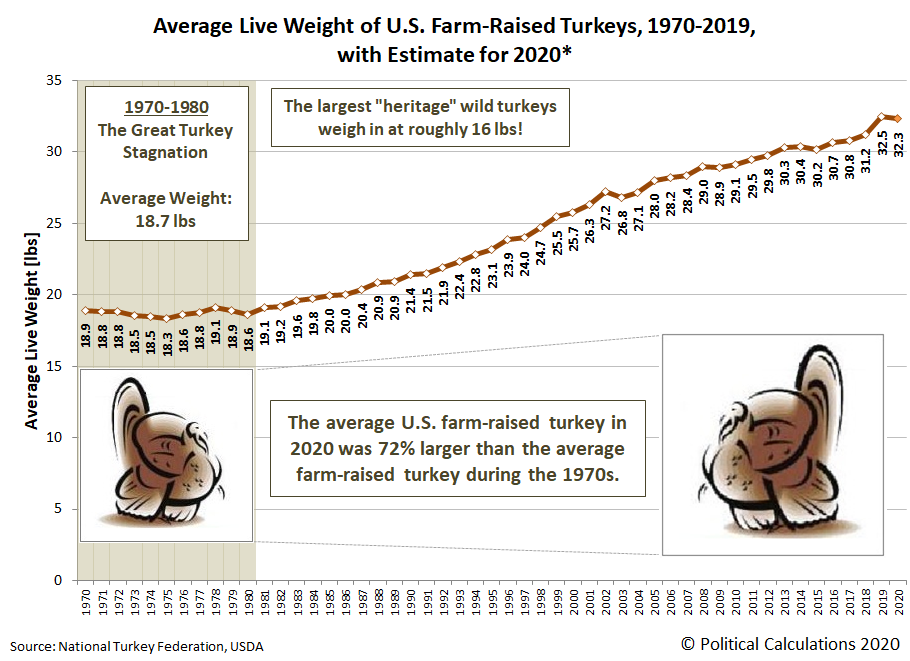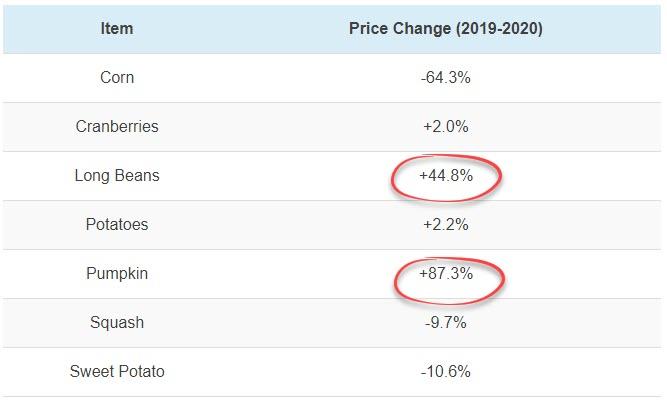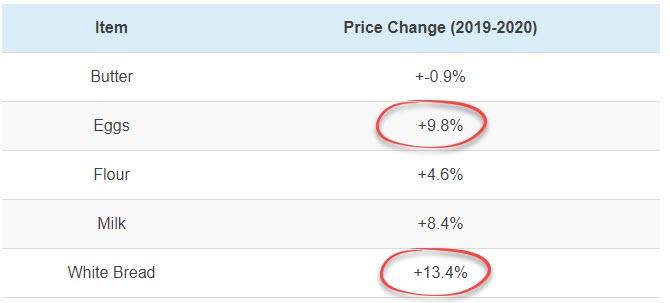Thanksgiving Dinner Costs Soar In 2020
Tyler Durden
Wed, 11/25/2020 – 21:00
Authored by Adrian Mak via AdvisorSmith.com,
With the Thanksgiving holiday fast approaching, Americans around the country are preparing their menus for the traditional holiday. This year, Thanksgiving celebrations may be a bit different given the effects of the coronavirus pandemic leading to smaller family gatherings with fewer people and potentially less holiday travel. Additionally, the pandemic has led to some disruption in food supply chains, as some food supply workers have been sickened with the virus.
AdvisorSmith examined a basket of staple foods from the Thanksgiving table to understand how these trends have affected the pricing of the ingredients for Thanksgiving dinner. We compared recent prices for common Thanksgiving foods in October and November compared with the previous year at both retail and wholesale, as reported by the Bureau of Labor Statistics and the U.S. Department of Agriculture to find the change in the cost of a basket of Thanksgiving foods.
Increase in Cost of Thanksgiving Foods
AdvisorSmith found that a basket of Thanksgiving foods costs approximately 9.8% more in 2020 when compared to Thanksgiving of 2019. The foods included in our analysis were turkey, vegetables, and baking & bread. Vegetables included were potatoes, cranberries, squash, sweet potatoes, corn, green beans, and pumpkin. Baking and bread products included flour, white bread, milk, eggs, and butter.
Turkey
AdvisorSmith found that the average price of turkeys at wholesale increased by 11.9% from 2019 to 2020 as of mid-November. Fresh turkeys increased in price an average of 11.6% year-over-year, while frozen turkeys increased in price by about 12.2%.
As Political Calculations notes, the population of farm-raised turkeys in the United States has generally fallen since 1996. In 2020, an estimated 222 million turkeys were raised on American farms, which is down some 27% from the peak of 302.7 million raised in 1996.
The figure for 2020 also represents a decline of 7 million from 2019’s level, which itself was revised downward from an initial estimate of 240 million.
By contrast, the collective live weight of farm-raised turkeys has generally plateaued since 1996, falling within a range between 6.877 billion pounds (1999) and 7.922 billion pounds (2008). The initial estimate of the live weight of 2020’s 222 million farm-raised turkeys is 7.175 billion pounds.
The combination of a generally flat total live weight for all turkeys produced on American farms with a falling number of birds can only be explained by the growing size of individual turkeys. In 2020, we estimate the average weight of a live farm-raised turkey in the U.S. is 32.3 pounds, down slightly from 2019’s revised figure of 32.5 pounds.
Compared to the decade of the 1970s, when the average farm-raised turkey tipped the scale at 18.7 pounds, that represents a 73% increase in the typical size of turkeys produced in the U.S., where their average weight has steadily risen over the last four decades.
That trend may be changing for 2020 however, because smaller turkeys are in high demand as Americans downsize for 2020’s Thanksgiving. With celebrations limited to immediate family members with the ongoing coronavirus pandemic, American consumers have been bypassing larger birds in favor of smaller ones.
Vegetables
We examined a basket of vegetables that are common for Thanksgiving, including potatoes, cranberries, squash, sweet potatoes, corn, green beans, and pumpkin. We found that prices for this basket increased an average of 7.4% during the period of October to mid-November 2020 compared with the same period in the prior year.
Baking & Bread
AdvisorSmith selected a basket of baking and bread products, which included flour, white bread, milk, eggs, and butter. The cost of these staples increased by approximately 7.1% on average during the period of October to mid-November compared with the prior year.
Methodology
AdvisorSmith selected a basket of common Thanksgiving staples from three major categories: turkey, vegetables, and baking & bread. To determine the average increase of the basket of Thanksgiving foods, we examined the difference in prices at retail or wholesale for each of the items individually. We then weighted each of the items to represent their percentage composition of a Thanksgiving meal. Turkey received the highest weight, at 55% of the meal, as the turkey accounts for a majority of the costs of the Thanksgiving meal. We used these weights to calculate the percentage increase in costs for the basket of Thanksgiving foods.
To calculate the increase in turkey prices, we examined wholesale turkey prices for fresh and frozen turkeys from the USDA’s Turkey Market News Report from November 13, 2020. This report included turkeys weighing 8-16 pounds and 16-24 pounds. We used the average price of turkeys per pound from each of these turkey types, and compared the prices to a year ago, which were also included in the report.
We calculated the increase in retail prices as reported by the U.S. Bureau of Labor Statistics for the following items: flour, white bread, milk, eggs, and potatoes. We compared the average retail price for these items in October 2020 compared with October 2019.
For the following vegetable items, and butter, we used the weekly advertised retail price as recorded by the USDA: cranberries, squash, sweet potatoes, corn, green beans, and pumpkin. We compared the average price this year to the price a year ago for the week of November 7th through November 13th.

